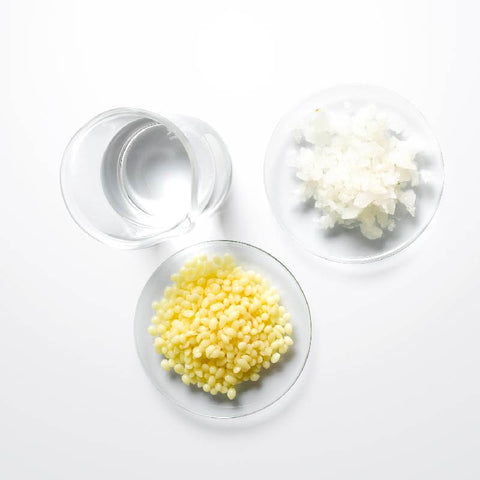
Nourishing oils & butters provide deep moisturization, leaving skin soft and supple.
Derived from the nuts of the shea tree. As an emollient and skin conditioning agent, it provides intense moisturization. Its rich content of fatty acids and vitamins contributes to its moisturizing properties and ability to form a protective barrier, preventing dryness. Additionally, Shea Butter helps to soothe and calm the skin. While generally safe for topical use, individuals with nut allergies should exercise caution.
Burnett CL, Fiume MM, Bergfeld WF, et al. Safety Assessment of Plant-Derived Fatty Acid Oils. International Journal of Toxicology. 2017;36(3_suppl):51S-129S. doi:10.1177/1091581817740569
An emollient and skin conditioning agent derived from a combination of caprylic acid and capric acid found in coconut or palm kernel oil. Provides lightweight moisturization, improved skin texture, and enhanced product spreadability. Caprylic/capric triglycerides form a protective barrier on the skin, retaining moisture and promoting hydration. They also play a vital role in enhancing the texture and spreadability of formulations. Generally safe for topical use.
Fiume MM, Bergfeld WF, Belsito DV, Hill RA, Klaassen CD, Liebler DC, Marks JG Jr, Shank RC, Slaga TJ, Snyder PW, Heldreth B. Amended Safety Assessment of Triglycerides as Used in Cosmetics. Int J Toxicol. 2022 Dec;41(3_suppl):22-68. doi: 10.1177/10915818221123790. Epub 2022 Oct 2. PMID: 36189772.
Derived from olive oil or plant-based sources like olives. As an emollient and moisturizing agent, squalane delivers exceptional skin benefits. Its lightweight, non-greasy nature allows for deep hydration, improving skin elasticity and enhancing the skin barrier's function. This emollient penetrates the skin to deliver moisture, leaving the skin soft and supple. It is generally well-tolerated, even for sensitive and acne-prone skin.
Final report on the safety assessment of Squalane and Squalene. (1990). Journal of the American College of Toxicology, 1(2), 37–56. https://doi.org/10.3109/10915818209013146
